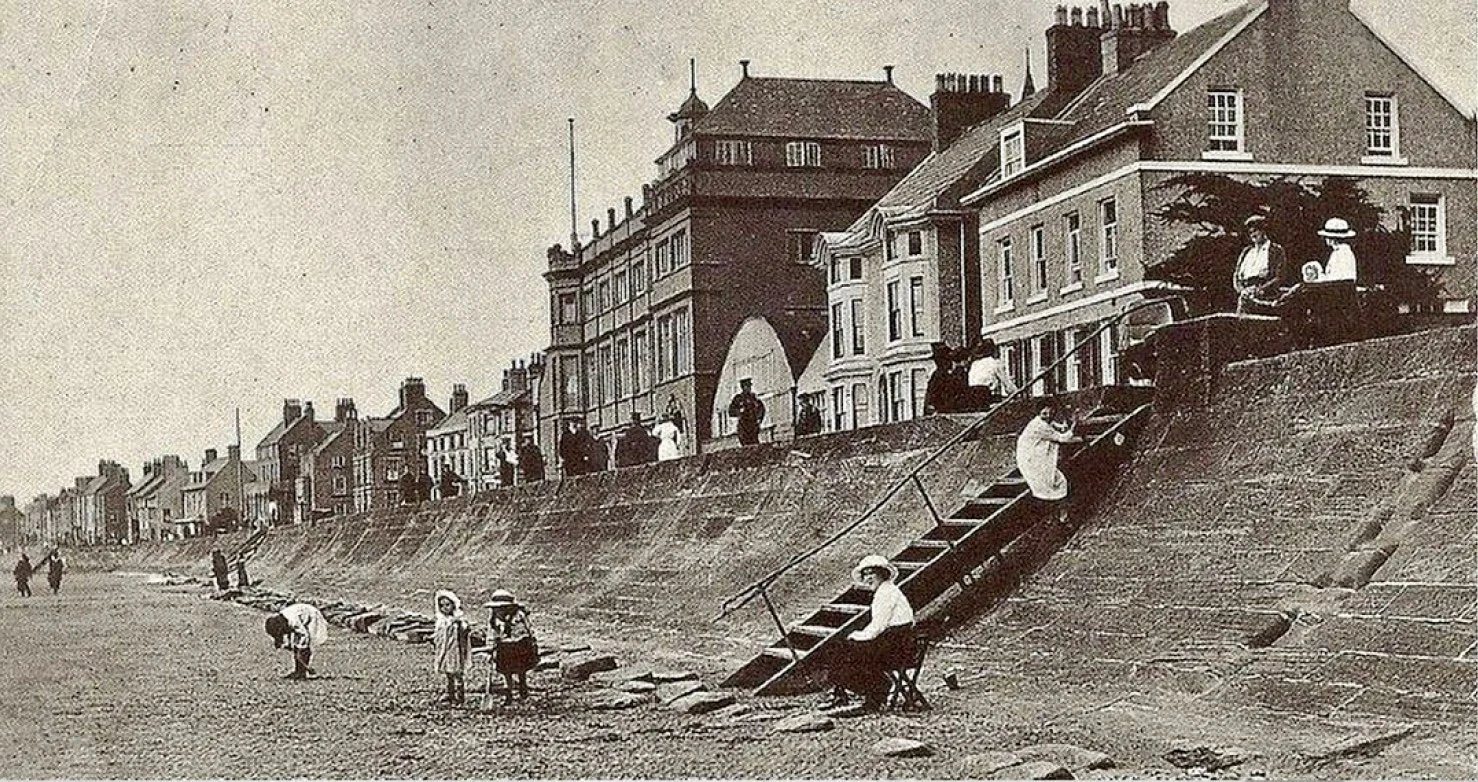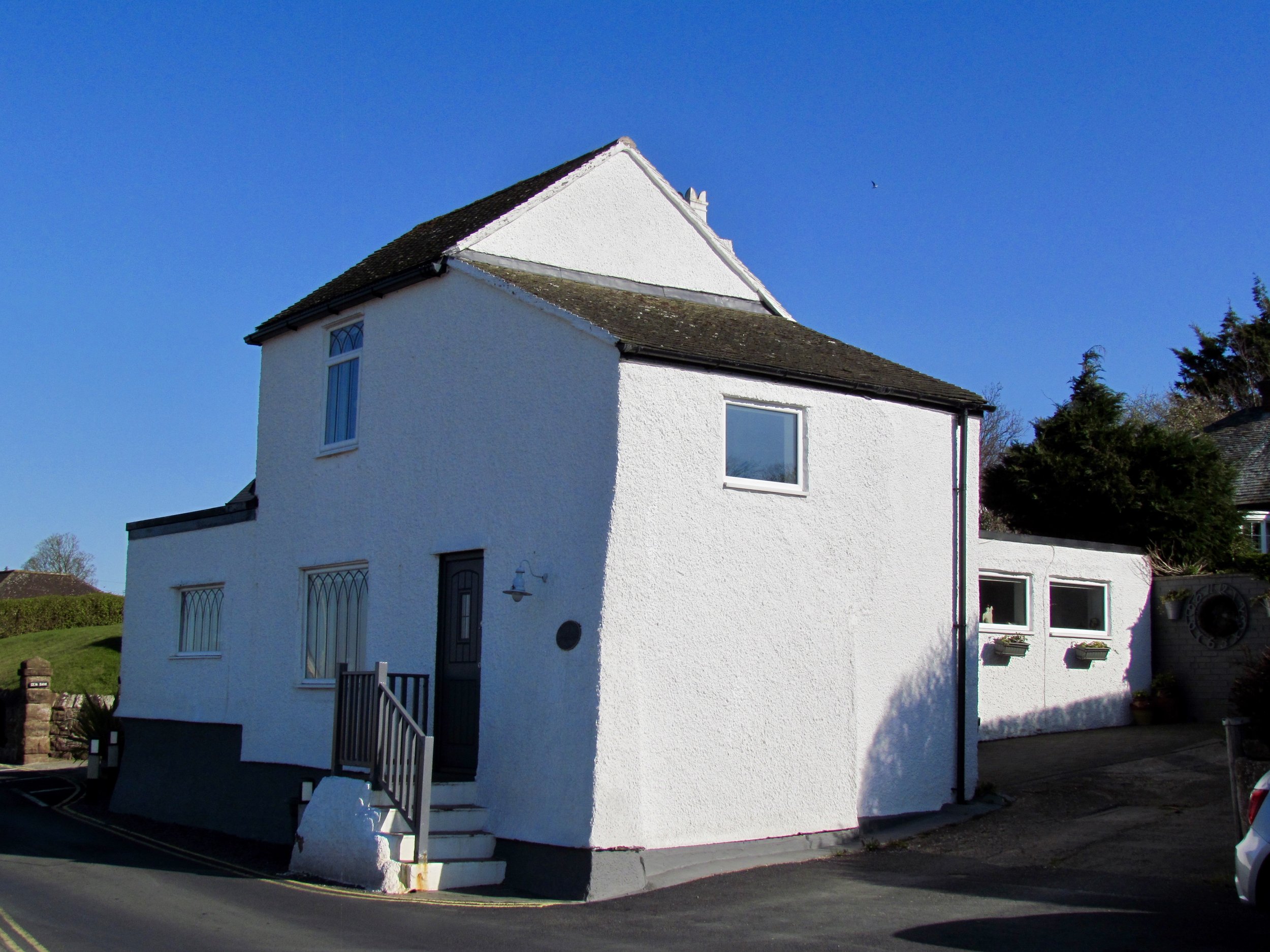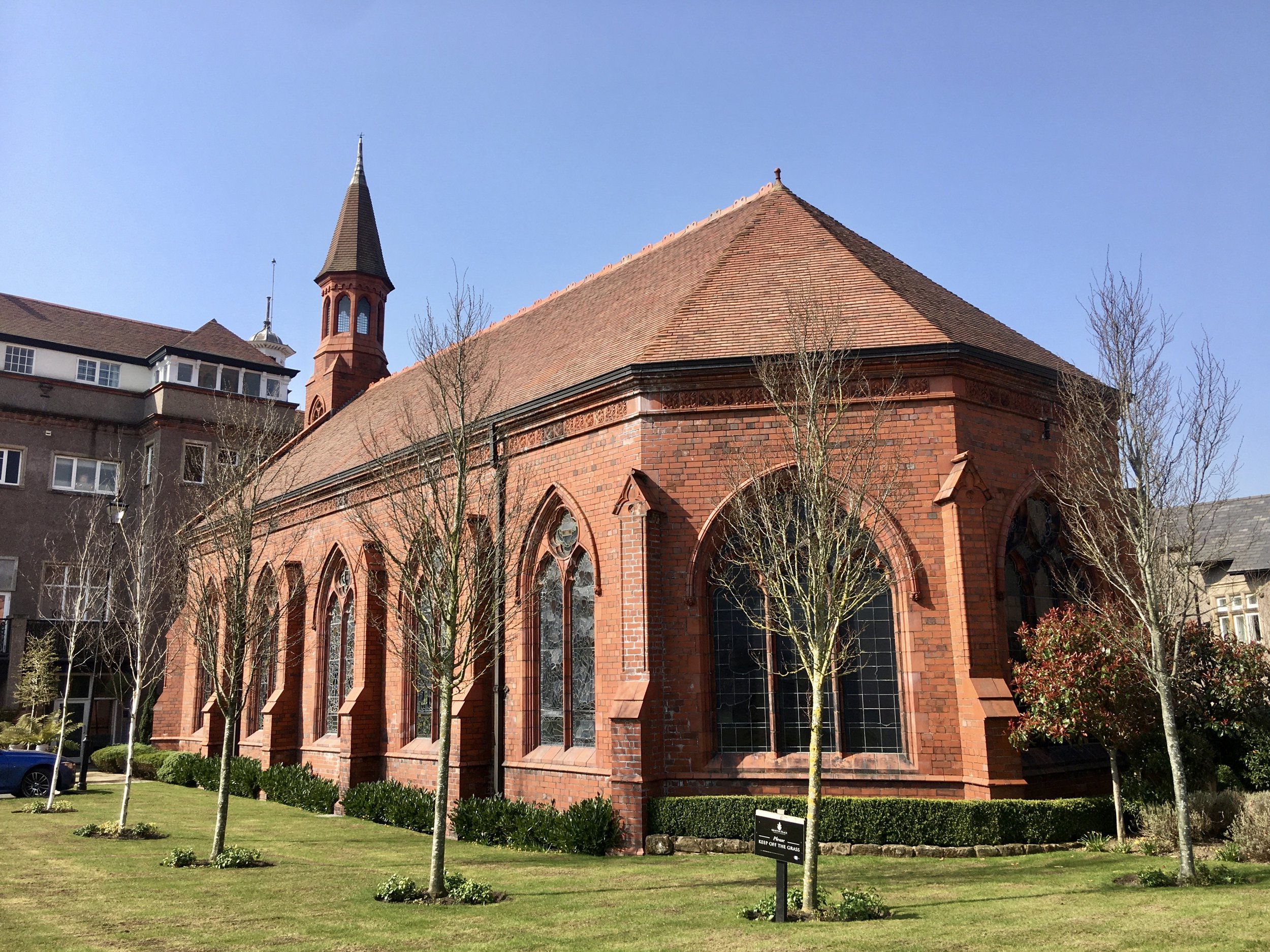the built heritage
There are currently over 30 properties within the Parkgate conservation area listed by Historic England as buildings of national importance or of special interest, grade II or above, almost half of all those to be found in the greater Neston area. Buildings of note on The Parade include: ‘The Old Watch House’ by the Middle Slip, for a time used as a lodging by customs men; St Thomas’ Church in Mostyn Square, formerly a non-conformist chapel, known as ‘the fishermen’s chapel’; the ‘Seven Steps’, where ancient wall paintings have been uncovered and can now be viewed by arrangement; and ‘Balcony House’, with the adjacent Assembly Room, where public gatherings once took place and billiards was played. The former Mostyn House School chapel is particularly noteworthy for both its design and its stained glass and as such is listed as grade II*.
Mostyn House School Chapel
Not far from the Red Lion, opposite Alma Cottage, a small section of the sea wall projects into the estuary. This area is known as the ‘Donkey Stand’. From 1871, when public holidays were first introduced, donkeys were tethered here in typical seaside tradition, offering rides to children as far as the South Slip – for them it was a change from their normal daily task of hauling carts of fish from the boats to the station. Before that a small customs house once stood on the shore at this spot, the only building actually built on the shore; this building later became Parkgate’s first Assembly Room, and it was next converted to become hot and cold sea-water baths, before its final demolition in 1840. This area has recently been re-furbished to create a more congenial space where visitors can relax with their ice-creams and admire the view, or study the plentiful birdlife to be seen amongst the marshes.
Mostyn House School, Parkgate
The former infant school survived, latterly as a primary school, until 1968, when it was replaced by a new primary school in Brooklands Road; the old school building was later converted into a private home and still survives as such. See article "The Infant School - Parkgate" in Parkgate Society Newsletter Issue 53 Autumn 1997 Page 4.
Last Updated April 2022







